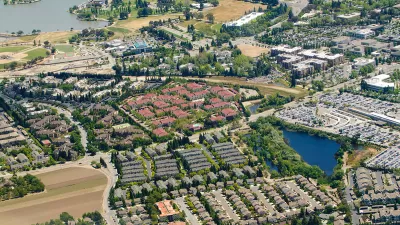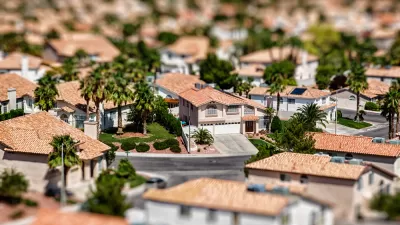The "back to the city" movement of the past decade or so could prove to be the outlier, as Census data shows population growth slowing in the biggest cities while suburban areas lead population growth in more metropolitan areas.

William H. Frey writes:
As we approach the end of the 2010s, the biggest cities in the United States are experiencing slower growth or population losses, according to new census estimates. The combination of city growth declines and higher suburban growth suggests that the “back to the city” trend seen at the beginning of the decade has reversed.
Frey provides plenty of specificity about which large cities are showing slowing growth (e.g., Boston, San Francisco, Dallas) and which large cities are shrinking (e.g., Chicago, New York City, and San Jose). "In some respects, New York epitomizes the reversal from beginning of the decade city magnetism," according to Frey. Large cities showing an uptick in growth are in the vast minority, according to Frey, but they include Sacramento, Tucson, and Henderson.
A consequence of the decline of big city growth, according to Frey, is the return of suburbanization:
In 2011-2012, city growth exceeded suburb growth in 19 of the 34 Sun Belt metros, and in eight of the 19 Snow Belt metros. However, in 2017-18 the city growth advantage appeared in just nine Sun Belt metros and two Snow Belt metros. Among these 11 areas that still registered city growth advantages are: Los Angeles, Washington, D.C., San Francisco, Denver, and Boston.
As for why this return to historic settlement patterns is underway, Frey only offers a very speculative sentence: it's "perhaps propelled by young adult millennials who may be finally departing dense urban cores as they make a delayed entrance into marriage and the housing market."
FULL STORY: Big city growth stalls further, as the suburbs make a comeback

Alabama: Trump Terminates Settlements for Black Communities Harmed By Raw Sewage
Trump deemed the landmark civil rights agreement “illegal DEI and environmental justice policy.”

Planetizen Federal Action Tracker
A weekly monitor of how Trump’s orders and actions are impacting planners and planning in America.

The 120 Year Old Tiny Home Villages That Sheltered San Francisco’s Earthquake Refugees
More than a century ago, San Francisco mobilized to house thousands of residents displaced by the 1906 earthquake. Could their strategy offer a model for the present?

Ken Jennings Launches Transit Web Series
The Jeopardy champ wants you to ride public transit.

BLM To Rescind Public Lands Rule
The change will downgrade conservation, once again putting federal land at risk for mining and other extractive uses.

Indy Neighborhood Group Builds Temporary Multi-Use Path
Community members, aided in part by funding from the city, repurposed a vehicle lane to create a protected bike and pedestrian path for the summer season.
Urban Design for Planners 1: Software Tools
This six-course series explores essential urban design concepts using open source software and equips planners with the tools they need to participate fully in the urban design process.
Planning for Universal Design
Learn the tools for implementing Universal Design in planning regulations.
Clanton & Associates, Inc.
Jessamine County Fiscal Court
Institute for Housing and Urban Development Studies (IHS)
City of Grandview
Harvard GSD Executive Education
Toledo-Lucas County Plan Commissions
Salt Lake City
NYU Wagner Graduate School of Public Service





























